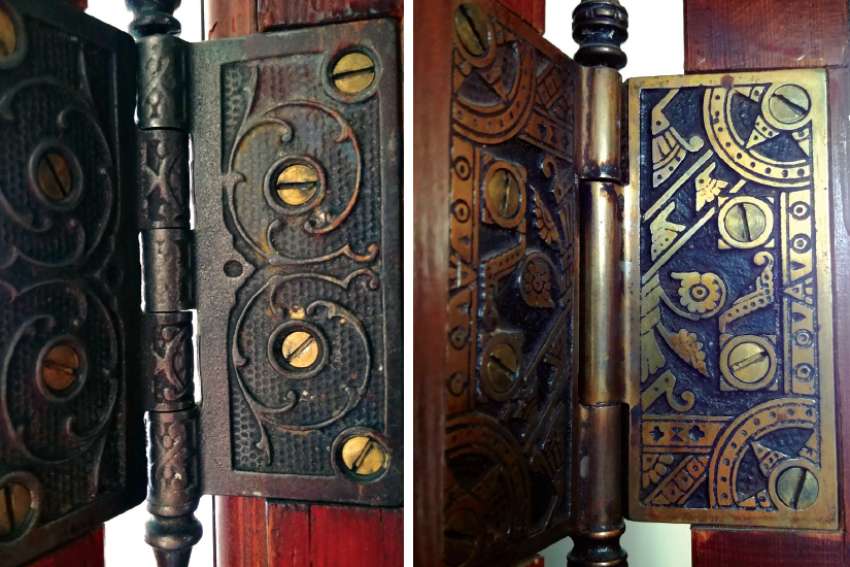The person who provides the majority of the latter is our Director of Campus Ministry, Dr. Lance Dixon, who will often speak first and set the stage for the meeting through well-chosen thoughts. Recently he spoke of his visit to one of our partners, the FCJ (Faithful Companions of Jesus) Centre in town, and a tour he took of their beautiful facility that is home to reflection and retreats.
As part of his visit he encountered something that I remember seeing as well: an ornately decorated hinge. As Dr. Dixon recalled, “I had never seen a door hinge quite like it. It was intricately carved, a design that you would expect to see on the front iron gate of a stately mansion or embassy. But such detail engraved on the hinge of a door to such a humble room, this was not something I would have expected from a door-maker.”
The pattern, moreover, was on the inside of the hinge, so that, when closed, it was invisible to the eye. Perhaps an invitation to “stand at the door and knock.”
Each door has this remarkable feature, a quiet devotion to God, hidden in plain sight. For Lance, it caused him to reflect, at first, on the devotion of the door-maker, but then more widely on how we all might celebrate our faith life through our daily lives.
“The door-maker remains a wonderful example how we are called, each in our Christian vocations, to devote ourselves to our labour, aware that our work may not bring us glory, or fame, or riches. And yet we use our gifts with a humble imagination for how we can glorify God in the smallest things we do.”
He compared this to a motivational story told by Bill von Achen about three stone masons working on a major project. The first was bored and chipping away and counting the minutes until the day was done. The second was mildly more interested but still almost cynically regarding the immensity of the project, and urging himself on by repeating, “I am building a cathedral.” The third mason, however, worked diligently at the stone, stopping frequently to consider and take pride in his work. A passer-by asked him what he was doing. The mason, surveying the carved stone, one among tens of thousands more that will need to be shaped, replied: “I am worshipping God.”
In the context of a university meeting, this reflection made me think immediately about the role each person of our community plays in serving our students, from the care taken at our admissions counter, through to the custodial staff member who has never missed one of the university’s basketball games.
For people like myself, standing at the front of the room, I get to bask in the success of this institution and, in many ways, in the glory that has been achieved by others. But for those who do not get to stand in the spotlight, their work is critical to supporting the structure, but hidden or half seen, like the carvings on the hinge.
Can anyone doubt, however, that this work of supporting the door — the university — is of equal or greater value?
Such, I think, is the mystery that God presents us. And Advent can very much be exactly that kind of behind-the-scenes experience, the quiet and holy preparation for the miracle that is to come.
Advent, as many have noted, is all about being between times: it is a time of waiting for the Christmas miracle, but it is also a time of preparation for the coming of our Lord. It is both passive and active — a hinge, if you will — that supports our faith journey.
It celebrates the past and the future: what has come and what shall come again. And of course, finally, it celebrates the Great Joy, the Great Hope.
Christmas is the great promise celebrated — the opening of a door that none can shut. But I would like to think that Jesus, in His ministry, made the point, over and over again, that we are the hinges upon which faith, hope and compassion will hang, and through this engagement and commitment we will participate in the Lord’s great promise.
This is the true gift of Christmas.
(Turcotte is president of St. Mary’s University in Calgary.)


